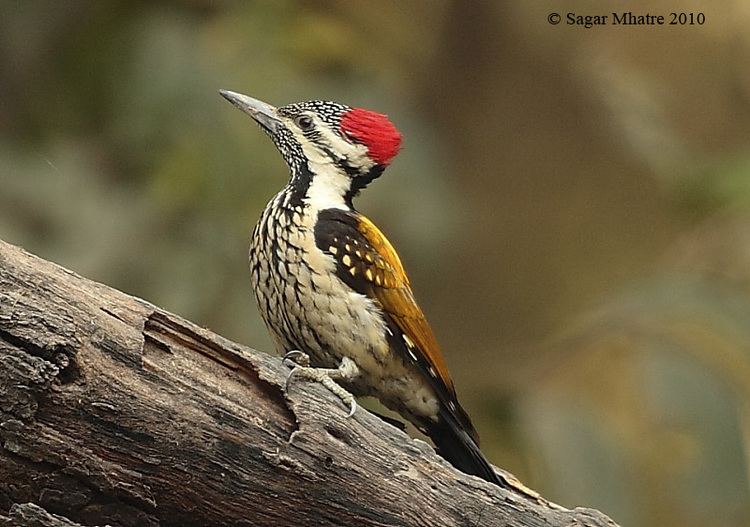Phylum Chordata Rank Species | Family Picidae Higher classification Dinopium | |
 | ||
Similar Dinopium, Greater flameback, Chrysocolaptes, Yellow‑crowned woodpecker, Streak‑throated woodpecker | ||
Call video of golden backed woodpecker or black rumped flameback dinopium benghalense india
The black-rumped flameback (Dinopium benghalense), also known as the lesser golden-backed woodpecker or lesser goldenback, is a woodpecker found widely distributed in the Indian subcontinent. It is one of the few woodpeckers that are seen in urban areas. It has a characteristic rattling-whinnying call and an undulating flight. It is the only golden-backed woodpecker with a black throat and black rump.
Contents
- Call video of golden backed woodpecker or black rumped flameback dinopium benghalense india
- Beautiful woodpecker bird black rumped flameback dinopium benghalense
- Description
- Subspecies
- Distribution and habitat
- Behaviour and ecology
- In culture
- References

Beautiful woodpecker bird black rumped flameback dinopium benghalense
Description

The black-rumped flameback is a large species at 26–29 cm in length. It has a typical woodpecker shape, and the golden yellow wing coverts are distinctive. The rump is black and not red as in the greater flameback. The underparts are white with dark chevron markings. The black throat finely marked with white immediately separates it from other golden backed woodpeckers in the Indian region. The head is whitish with a black nape and throat, and there is a greyish eye patch. Unlike the greater flameback it has no dark moustachial stripes.

The adult male has a red crown and crest. Females have a black forecrown spotted with white, with red only on the rear crest. Young birds are like the female, but duller.

Like other woodpeckers, this species has a straight pointed bill, a stiff tail to provide support against tree trunks, and zygodactyl feet, with two toes pointing forward, and two backward. The long tongue can be darted forward to capture insects.
Leucistic birds have been recorded. Two specimens of male birds from the northern Western Ghats have been noted to have red-tipped feathers on the malar region almost forming a malar stripe. A female specimen from Lucknow has been noted to have grown an abnormal downcurved hoopoe-like bill.
Subspecies
Distribution and habitat
This flameback is found mainly on the plains going up to an elevation of about 1200m in Pakistan, India south of the Himalayas and east till the western Assam valley and Meghalaya, Bangladesh and Sri Lanka. It is associated with open forest and cultivation. They are often seen in urban areas with wooded avenues. It is somewhat rare in the Kutch and desert region of Rajasthan.
Behaviour and ecology
This species is normally seen in pairs or small parties and sometimes joins mixed-species foraging flocks. They forage from the ground to the canopy. They feed on insects mainly beetle larvae from under the bark, visit termite mounds and sometimes feed on nectar. As they make hopping movements around branches, they often conceal themselves from potential predators. They adapt well in human-modified habitats making use of artificial constructions fallen fruits and even food scraps.
The breeding season varies with weather and is between February and July. They frequently drum during the breeding season. The nest hole is usually excavated by the birds and has a horizontal entrance and descends into a cavity. Sometimes birds may usurp the nest holes of other birds. Nests have also been noted in mud embankments. The eggs are laid inside the unlined cavity. The normal clutch is three and the eggs are elongate and glossy white. The eggs hatch after about 11 days of incubation. The chicks leave the nest after about 20 days.
In culture
In Sri Lanka these woodpeckers go by the generic name of kæralaa in Sinhala. In some parts of the island, it is also called kottoruwa although it more often refers to barbets. This bird appears in a 4.50 rupee Sri Lankan postal stamp. It also appears in a 3.75 Taka postal stamp from Bangladesh.
